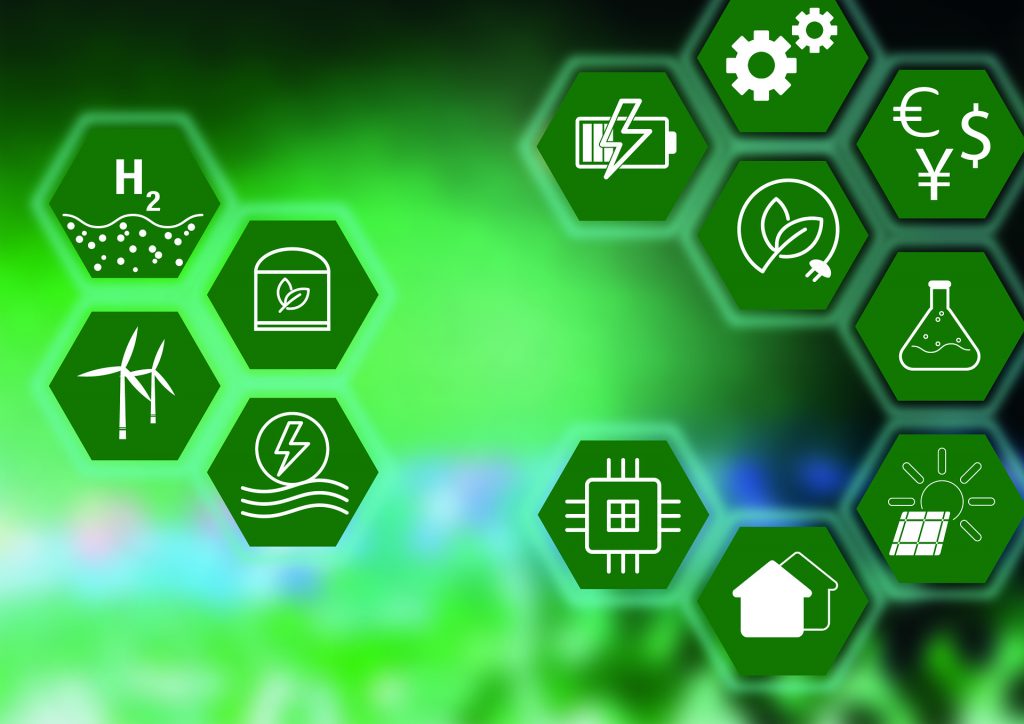
Kathmandu is hosting the Nepal Green Hydrogen Summit on Monday and Tuesday (October 10-11). Organisers claim it will be the first-of-its-kind event in the country.
High-profile personalities and dignitaries of Nepal from various industries, ministries and government offices and development partners in Nepal, including renowned international experts and leading global companies working in green hydrogen technology, will discuss various issues related to the technology and its relevance in Nepal.
Various national and international, governmental and non-governmental agencies are partnering to host the summit. The main organisers include MIT Group Foundation and Global NRN Foundation; the Ministry of Energy, Water Resources, and Irrigation; the Ministry of Finance; Global Green Growth Institute; Wind Power Nepal; Kathmandu University and Melbourne Institute of Technology. Shesh Ghale, one of the pioneers of the Nepali diaspora movement, has been instrumental in hosting the summit as the president of MIT Group Foundation.

Onlinekhabar has talked to Ghale about the plan behind the Nepal Green Hydrogen Summit. Excerpts:
Nepal knows you as a non-resident Nepali (NRN) movement pioneer. But, how are you connected to the Nepal Green Hydrogen Summit?
To be honest, we, as NRNs, always think about the socioeconomic development of Nepal and Nepalis. With this in mind, as you know, we set up the MIT Group Foundation in 2015/16. Since then, we have donated around Rs 120 million, mostly in relief activities during and after the 2015 earthquake, the Nepal blockade and the Covid pandemic. We also built some schools.
However, the pandemic made us rethink our approach to giving. We realised we needed to build the capability and self-sufficiency, necessary for the economic and industrial success of Nepal. With recent acute energy crisis around the world, it made us think about its impact on Nepal.
Reading and researching various articles and reports, we have discovered around 40,000 people die every year from illnesses directly related to poor air quality in Nepal. Similarly, a child born today will have their life shortened by more than two years. Likewise, our mountains are melting. A 2020 study projected that the eastern end of the range, in Nepal and Bhutan, could lose as much as 60 per cent of its ice mass by 2100, relative to 2015, even in a low-emissions scenario, due to global warming.
So, the biggest overarching issue today is global warming. Climate change is real, and some reports suggest that it poses a much greater threat to public health than the Covid pandemic and hence needs to be treated with equal urgency.
Further research indicates green hydrogen is the only solution the world has identified today, which could mitigate all these climate-related threats to humanity. This made us very excited about the Nepal Green Hydrogen Summit.
So, why are you organising this event? How will it benefit the country?
Nature has hydrogen in abundance. It is a clean-burning molecule that helps to de-carbonise a range of sectors previously proven hard to clean. Green hydrogen powers steel, cement and transport industries which then emit water instead of carbon dioxide without using fossil fuels. Green hydrogen can also produce green fertilisers, which can ensure food safety and security and energy security through energy storage.
These capabilities make for a compelling argument that green hydrogen produced through the electrolysis of water using electricity from renewable energy sources can power the transport sector and heavy industries including agriculture.
We got so excited after learning about green hydrogen and its benefits. It not only addresses threats and risks associated with global warming but also helps Nepal become one of the prosperous nations by 2030 if we work together as a policymaker and the public collaboratively.
Therefore, we have organised Nepal Green Hydrogen Summit to share these ideas and knowledge from the experts so that everyone knows the challenges and opportunities it presents, its implication on greenhouse emission mitigation, and identify policy solutions so we can harness this potentiality for the greater good.
But, many people comment green hydrology is a distant dream for Nepal. Do you think it is possible anytime soon?

Yes, it is. In every regard, Nepal is unexplored. We don’t have huge industries like developed nations, which have much bigger problems as they are often powered by fossil fuels and therefore difficult for them to transition into renewables. But, for us, we start from zero with no incumbency burden, so it will be easier for us to leapfrog. Technology is readily available. All we need is the vision and willingness of our leaders.
The best thing is that we have abundant sources of water. One report shows that Nepal has the potential to produce the most competitive green hydrogen energy by 2032 if we start transitioning into a green economy and develop policy decisions on greening Nepal now. We have the potential to be one of the leaders in producing green hydrogen on a competitive cost base.
Of course, there are some challenges, but I believe all the challenges can be overcome if our policymakers work collaboratively and stop bickering about petty issues and start thinking about humanity’s shared future.
So, do you mean green hydrogen is also the future of Nepal?
Yes. We have already a surplus of hydroelectricity production, and it is increasing each year. It means a lot of hydroelectricity will spill over. But, it is green and renewable energy and it can also be converted to green hydrogen. We only need is the government roadmap, a policy and the capital.
For now, we may not envisage a very commercial for-profit project. However, its social benefits will be enormous. Therefore, a startup project must be supported by the government and international agencies. All players must come together.
One good thing is we have the technology – we don’t have to reinvent it.
Overall, I see Nepal becoming a very powerful nation if we can transform our energy system.
So, what should be the country’s priorities?
I recommend the government needs to set up a green hydrogen authority that will have almost similar rights and responsibilities to those of the Nepal Electricity Authority (NEA).
What about investments? Are investors like you ready?
We have already invested a considerable amount of money and other resources as it is a good cause. We also consider this as a civic responsibility more than a profit-making business. We believe in the environmental and social governance aspect of investment (ethical and social investment).
But, the investments have to be bankable. If that happens, the Nepali diaspora has the capacity to lead the projects.























